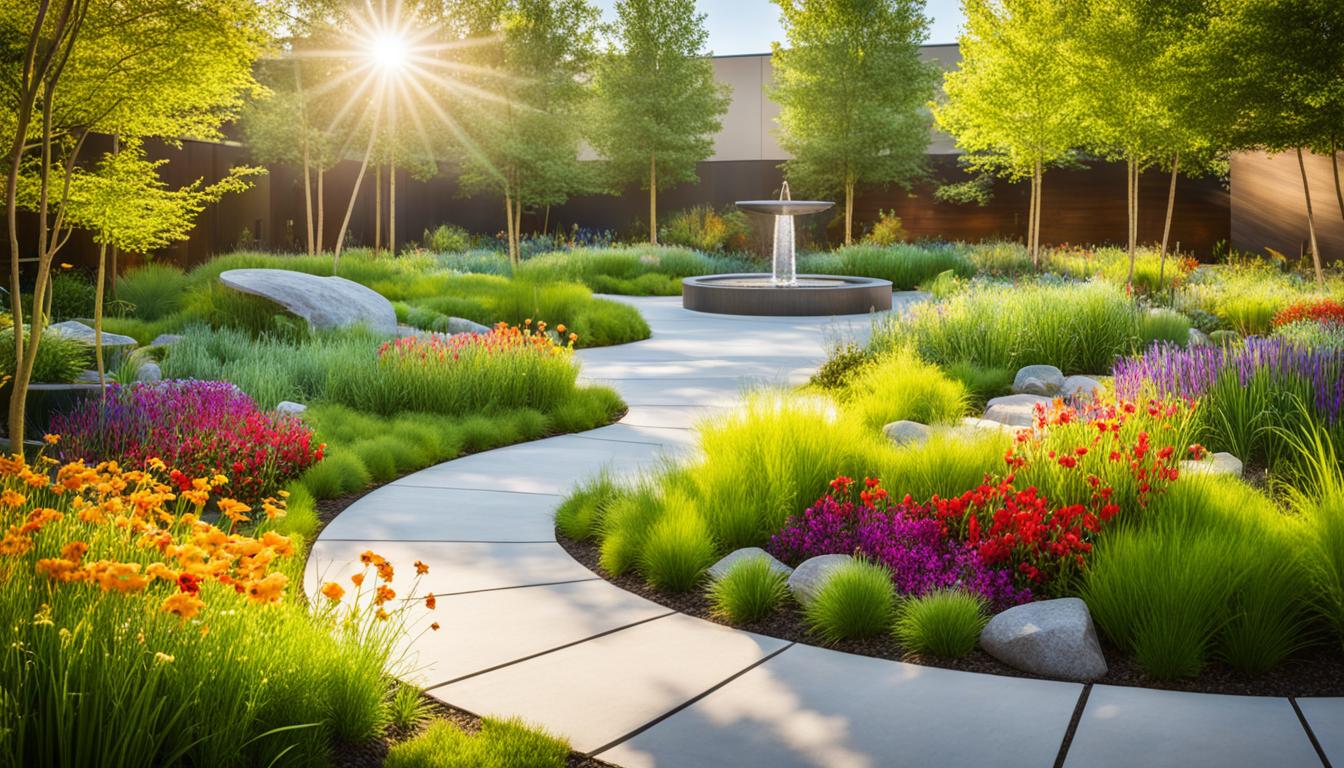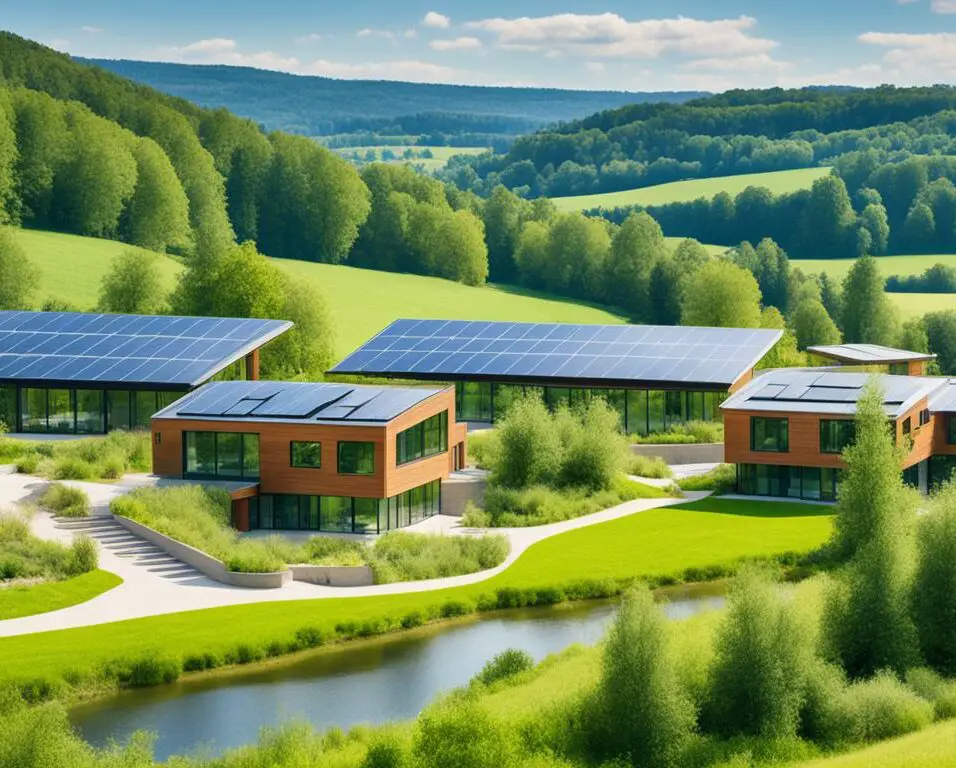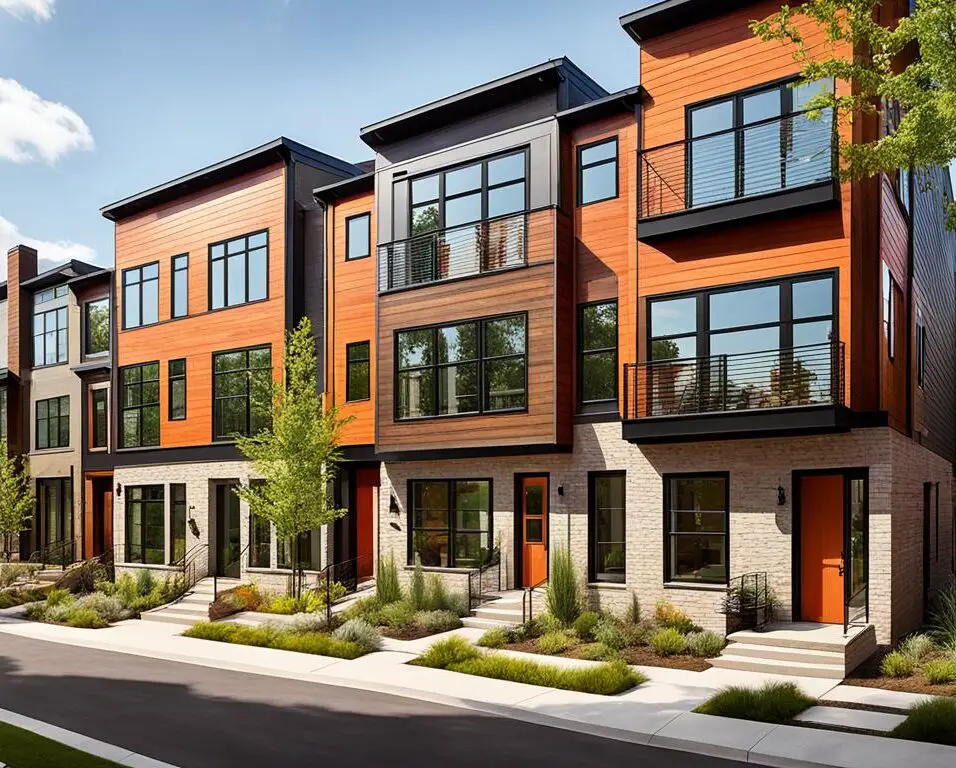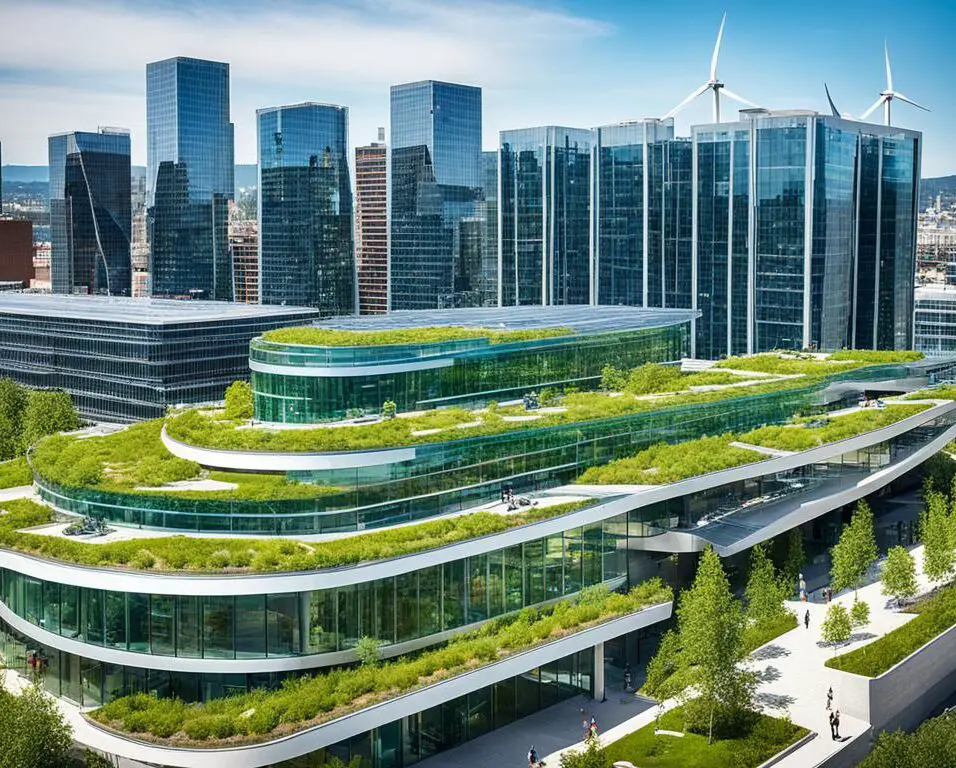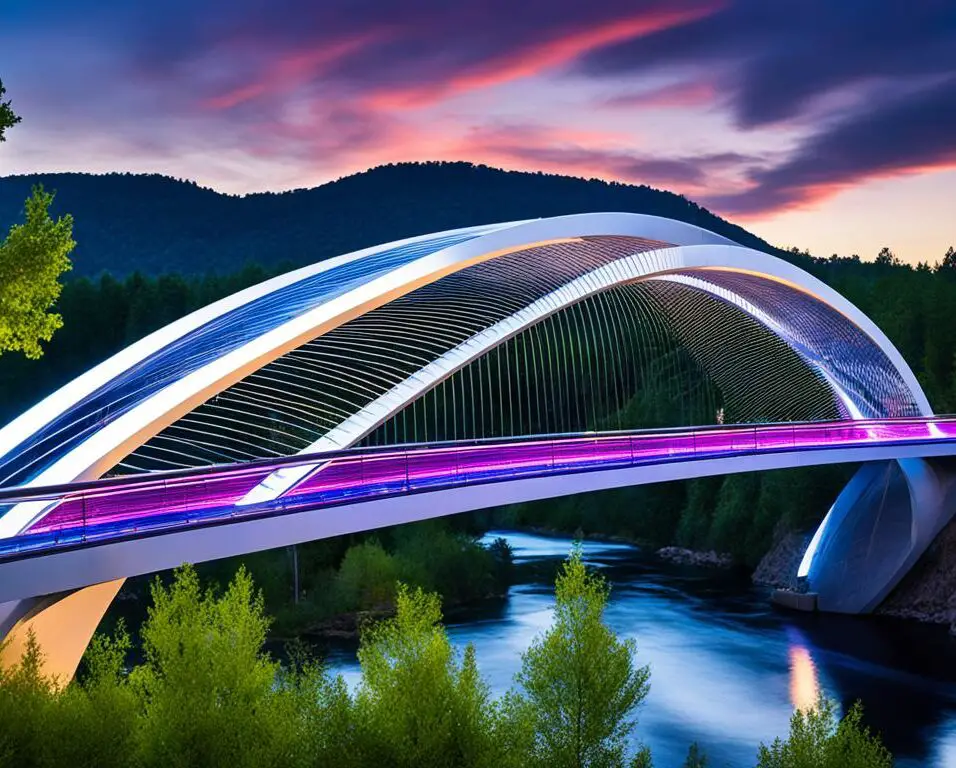Landscape Architecture Techniques for Breathtaking Outdoor Spaces
Welcome to my article on landscape architecture techniques. If you’re looking to transform your outdoor space into a stunning haven, you’ve come to the right place. Landscape architects are experts in utilizing various techniques to create visually appealing and functional landscapes. With their knowledge of horticulture, architecture, and design principles, they can turn ordinary outdoor areas into extraordinary spaces that leave a lasting impression.
Whether you have a small backyard or a vast garden, landscape architecture techniques can help you achieve the outdoor transformation you desire. By incorporating these techniques, you can create breathtaking spaces that not only enhance the aesthetics of your property but also provide a sanctuary for relaxation and enjoyment.
Key Takeaways:
- Landscape architecture techniques play a crucial role in creating stunning outdoor spaces.
- Incorporating water elements such as fountains, ponds, and waterfalls adds a sense of tranquility and visual interest to the landscape.
- Creating outdoor living spaces with features like outdoor kitchens and fire pits enhances functionality and provides opportunities for entertaining.
- Sustainable landscape design practices focus on conserving resources and promoting biodiversity.
- Landscape architects are skilled at maximizing small spaces through techniques like vertical gardens and multi-functional furniture.
Incorporating Water Elements
Adding water elements to landscape design can transform outdoor spaces into tranquil and serene environments. These features not only enhance the visual appeal of the landscape but also provide a focal point that captivates the viewer. Whether it’s the soothing sound of flowing water or the reflection of the surrounding greenery, water elements create a sense of calm and peace in the garden.
There are various techniques you can employ to incorporate water elements into your landscape design. Consider installing:
- Fountains: These elegant structures can serve as a centerpiece, adding a touch of elegance and sophistication to the garden.
- Ponds: A pond can create a serene atmosphere and provide a habitat for aquatic plants and animals, attracting wildlife and promoting biodiversity.
- Waterfalls: The gentle cascading of water down rocks or steps adds a natural element and creates a visually appealing focal point.
Water features not only offer aesthetic value but can also provide recreational opportunities. Consider incorporating swimming pools or spa features for a refreshing and rejuvenating experience. These additions enhance both the beauty and functionality of the outdoor space, creating a truly remarkable landscape.
“Water is the driving force of all nature.” – Leonardo da Vinci
Water elements have a profound impact on the overall landscape design, creating an oasis that invites relaxation and contemplation. They can be seamlessly integrated into various garden styles, from modern to traditional, and can be scaled to suit any size of outdoor space.
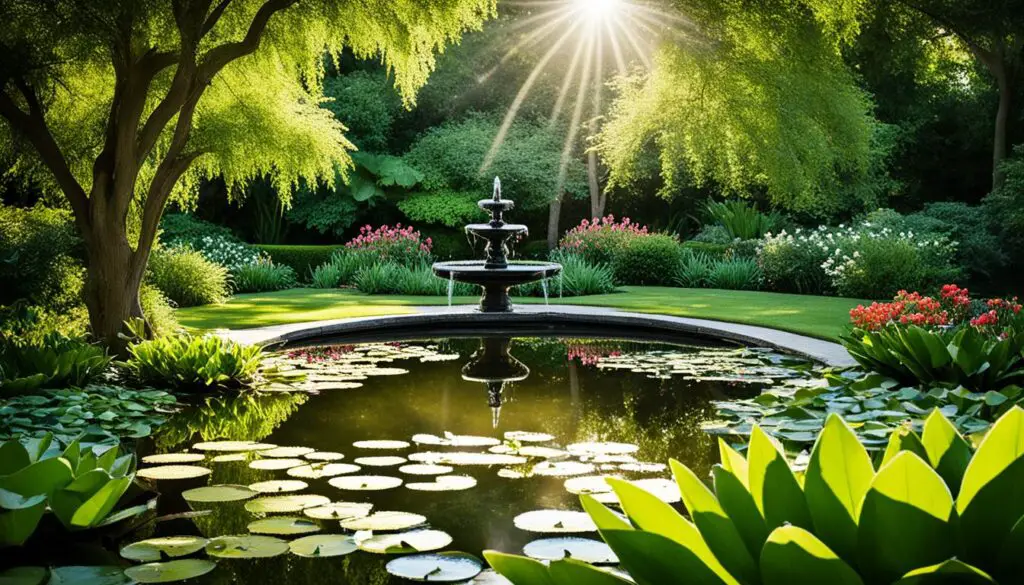
| Benefits of Water Elements in Landscape Design |
|---|
| Enhances visual appeal of the landscape |
| Creates a soothing and tranquil ambiance |
| Provides a focal point and visual interest |
| Attracts wildlife and promotes biodiversity |
| Offers opportunities for recreational activities |
Creating Outdoor Living Spaces
Outdoor living spaces have become increasingly popular, offering a seamless transition between indoor and outdoor areas. As a landscape architect, my goal is to design functional and inviting entertaining areas that maximize the outdoor experience for homeowners. Through careful planning and strategic techniques, I create outdoor living spaces that elevate the overall aesthetic while providing practical features for entertaining and relaxation.
One key element in creating outdoor living spaces is the incorporation of outdoor kitchens. These culinary hubs allow homeowners to prepare meals and entertain guests while enjoying the beauty of nature. By integrating high-quality appliances, stylish countertops, and ample storage, outdoor kitchens become the heart of any gathering. Whether it’s grilling burgers, hosting a barbeque party, or simply enjoying a morning cup of coffee, outdoor kitchens enhance the overall experience of an outdoor living space.
Another vital aspect to consider is the layout and design of dining spaces and lounging areas. By strategically placing comfortable furniture, whether it’s a dining set or sectional sofa, I make sure these areas are both visually appealing and functional. The choice of materials, such as weather-resistant fabrics and durable furniture frames, ensures that these areas can withstand the outdoor elements.
To further enhance the usability of outdoor living spaces, I incorporate elements like pergolas, fire pits, or patio covers. These features provide shelter and extend the usability of the space throughout the year. With the shade provided by a pergola or the warmth emitted from a fire pit, homeowners can enjoy their outdoor living spaces even during inclement weather or colder seasons.
Privacy and defined zones are also essential considerations in designing outdoor living areas. By strategically placing plantings and structures, I can create natural barriers that offer privacy and seclusion. Whether it’s a row of tall shrubs or a trellis covered in climbing plants, these elements delineate different zones within the outdoor living area while adding natural beauty and enhancing the overall design.
Design Elements for Outdoor Living Spaces:
- Outdoor kitchens with high-quality appliances and ample storage
- Dining spaces with comfortable furniture
- Lounging areas with cozy seating options
- Pergolas, fire pits, or patio covers for shelter and extended usability
- Strategic placement of plantings and structures for privacy and defined zones
By incorporating these design elements and techniques, I create outdoor living spaces that are not only visually stunning but also functional and inviting. Homeowners can enjoy entertaining guests, relaxing with family, or simply appreciating the beauty of their surroundings in these extraordinary outdoor environments.
| Outdoor Living Space Feature | Benefits |
|---|---|
| Outdoor kitchen | Allows for seamless entertaining and culinary experiences in an outdoor setting. |
| Dining spaces | Provides a dedicated area for outdoor meals and gatherings. |
| Lounging areas | Offers comfortable seating options for relaxation and socializing. |
| Pergolas, fire pits, or patio covers | Provides shelter and extends usability throughout the year. |
| Strategic placement of plantings and structures | Defines different zones and creates privacy within the outdoor living area. |
Sustainable Landscape Design
Sustainable landscape design techniques prioritize eco-friendly practices to conserve resources and reduce environmental impact. As a landscape architect, I focus on creating outdoor spaces that not only look beautiful but also contribute to a healthier planet. One of the key principles of sustainable landscape design is the use of native plants, which are well-suited to the local climate and require less water and maintenance compared to exotic species.
Implementing efficient irrigation systems is another crucial aspect of sustainable landscape design. By using smart watering techniques and incorporating drip irrigation, we can minimize water waste and ensure that plants receive the right amount of water for their needs. Rainwater harvesting is another eco-friendly practice that helps reduce reliance on municipal water sources and conserves water resources.
Using permeable surfaces for paths and driveways is not only aesthetically pleasing but also helps manage water runoff. These surfaces allow rainwater to percolate into the soil instead of flowing into storm drains, preventing water pollution and recharging groundwater reserves.
“Sustainable landscape design focuses on creating outdoor spaces that not only look beautiful but also contribute to a healthier planet.”
Promoting biodiversity is another important aspect of sustainable landscape design. By creating habitats for pollinators such as bees and butterflies, we can support local ecosystems and enhance the overall health of the environment. Using organic fertilizers and pest control methods further reduces the use of harmful chemicals, ensuring a safer and more sustainable approach to managing landscapes.
Sustainable landscape design is not only beneficial for the environment but also for the homeowners. By incorporating eco-friendly practices, we can create outdoor spaces that require less maintenance, save water, and provide a healthier and more enjoyable environment for people to relax and connect with nature.
See the table below for a comprehensive overview of the key elements of sustainable landscape design:
| Key Elements | Benefits |
|---|---|
| Use of native plants | – Well-suited to local climate |
| – Require less water and maintenance | |
| Efficient irrigation systems | – Minimizes water waste |
| – Ensures proper watering without overuse | |
| Rainwater harvesting | – Reduces reliance on municipal water |
| – Conserves water resources | |
| Permeable surfaces | – Manages water runoff |
| – Prevents water pollution | |
| – Recharges groundwater reserves | |
| Promoting biodiversity | – Creates habitats for pollinators |
| – Supports local ecosystems | |
| – Reduces chemical use |
Maximizing Small Spaces
Landscape architects have an impressive ability to transform small outdoor spaces into functional and visually captivating areas. With their expertise, they can create stunning landscapes that maximize every inch of available space. Through the use of innovative techniques, such as small space landscaping, vertical gardens, and multi-functional furniture, landscape architects can turn even the tiniest of spaces into an inviting oasis.
Small Space Landscaping
Small space landscaping involves carefully selecting plant varieties that thrive in confined areas. By choosing compact and dwarf plant varieties, landscape architects can create a lush and vibrant garden within limited space. These plants not only add beauty to the landscape but also require minimal maintenance, making them ideal for small outdoor areas.
Vertical Gardens
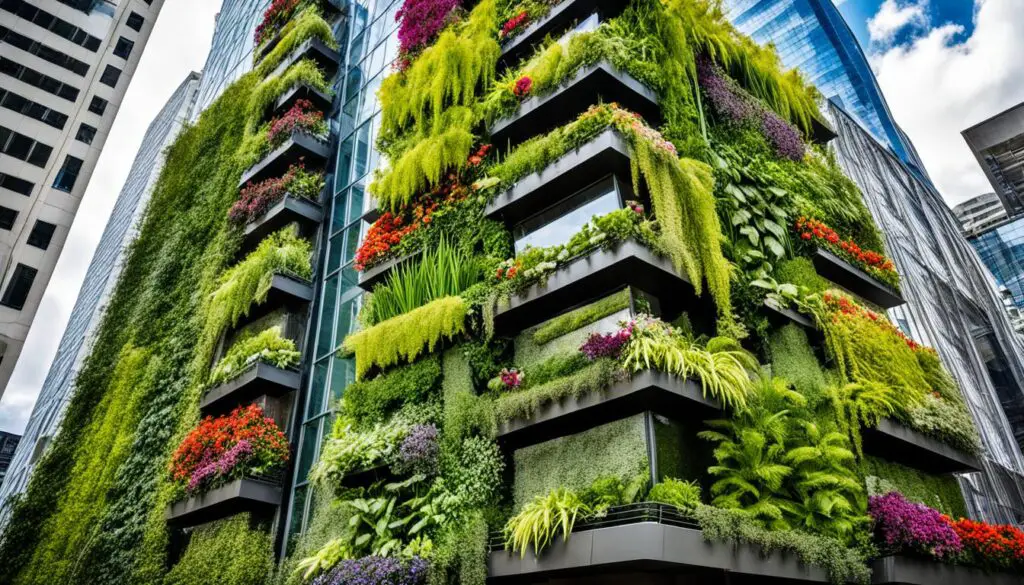
Vertical gardens, also known as living walls, are a popular technique used by landscape architects to maximize vertical space in small areas. By installing plants on specially designed structures or walls, landscape architects can create a stunning green backdrop that adds depth and interest to limited spaces. Vertical gardens not only provide visual appeal but also have the added benefit of improving air quality and reducing noise pollution.
Multi-functional Furniture
Another ingenious technique employed by landscape architects is the use of multi-functional furniture. By incorporating furniture pieces that serve multiple purposes, such as benches with built-in storage or tables that double as planters, landscape architects can optimize the functionality of small outdoor spaces.
“Maximizing small spaces requires a thoughtful and strategic approach. By combining small space landscaping, vertical gardens, and multi-functional furniture, landscape architects can create outdoor areas that are both practical and aesthetically pleasing.”
Furthermore, landscape architects focus on creating visually open sightlines to make small spaces appear larger and more inviting. By utilizing clever design elements and materials, such as mirrors, glass features, or open lattice structures, landscape architects can create an illusion of space, enhancing the overall ambiance of the area.
With their expertise in maximizing small spaces, landscape architects can transform even the most compact outdoor areas into breathtaking havens. By utilizing techniques like small space landscaping, vertical gardens, and multi-functional furniture, they can unlock the full potential of small spaces and create outdoor environments that are both functional and enchanting.
Conclusion
In conclusion, landscape architecture techniques are vital when it comes to creating breathtaking outdoor spaces. These techniques involve incorporating water elements, creating outdoor living areas, implementing sustainable design practices, and maximizing small spaces. By utilizing these strategies, landscape architects can achieve stunning results that enhance not only the aesthetics but also the functionality, sustainability, and overall enjoyment of the outdoor space.
Whether you’re looking to transform your garden into a peaceful oasis, create an inviting outdoor living area for entertaining guests, or make the most of a small backyard, landscape architecture techniques can help you achieve your vision and create truly extraordinary outdoor spaces.
With the use of water elements such as fountains and ponds, you can add a sense of tranquility and create a focal point for your garden. Creating outdoor living spaces with features like outdoor kitchens and fire pits allows for seamless transitions between indoor and outdoor areas, providing comfort and enjoyment for gatherings. By integrating sustainable design practices like using native plants and efficient irrigation systems, you can contribute to environmental conservation while creating a beautiful landscape. Lastly, maximizing small spaces with vertical gardens and multi-functional furniture helps optimize their usage, making them visually appealing and functional.
So if you’re ready to transform your outdoor space, consider consulting a landscape architect and utilizing their expertise in landscape architecture techniques. With their guidance, you can create breathtaking outdoor spaces that will leave you and your guests in awe, while also enhancing the overall value and beauty of your property.



